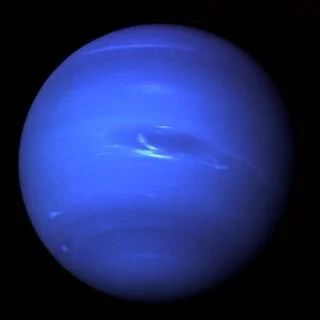Neptune is the eighth planet from the Sun.
It is dark, cold and windy.
It is four times larger than Earth.
It has six rings.
The Blue planet
The atmosphere of Neptune is mostly hydrogen, helium and methane gases. The methane absorbs red light, making Neptune appear blue.
A gas giant
It is one of the helium 'gas giants' in our solar system. Jupiter, Saturn and Uranus, are also 'gas giants', composed mainly of gases, wrapped around a rocky core.
It is 4500 million kilometres away from the Sun. It takes Neptune 165 Earth years to orbit the sun. The planet was discovered in 1846, so in 2011 it completed its first orbit of the sun since being discovered by humans.
Moons
Neptune has thirteen moons that we know about – the last six were discovered when the Voyager 2 spacecraft got close to Neptune on 25 August 1989 . Those six are among the darker objects in space so are hard to see from Earth.
Because the planet is named after the Roman god of the sea, its moons are named after less important sea gods and nymphs: Triton, Neireid, Naiad, Thalassa, Despina, Galatea, Larissa, Proteus, Halimeded, Psamathe, Sao, Laomedeia and Neso.
One of Neptune's moons, Triton, is the only large moon in the solar system that goes round its planet in an opposite direction to the planet's orbit.
It’s a good idea to get information from more than one source!
Read more about Neptune
https://www.planetsforkids.org/planet-neptune.html


